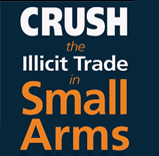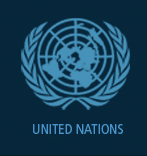Frequently asked questions
- What is the 2006 Small Arms Review Conference
The United Nations Conference to Review Progress Made in the Implementation of the Programme of Action (PoA) to Prevent, Combat and Eradicate the Illicit Trade in Small Arms and Light Weapons in All Its Aspects is part of the follow-up process recommended by the States that participated in the United Nations Conference that adopted the Programme of Action in July 2001 (A/CONF.192/15) It is a gathering of delegates from UN Member States, representatives of international and regional organizations, as well as of civil society, to review progress made in the Programme’s implementation.
- Why is the 2006 Small Arms Review Conference taking place?
The United Nations General Assembly decided that the Conference would be held in New York from 26 June to 7 July 2006 (A/RES/59/86). It also decided that a Preparatory Committee, open to all Member States, would be formed and would hold a two-week session in New York from 9 to 20 January 2006. If necessary, a subsequent session of up to two weeks in duration may be held.
- What will be reviewed and why is the Conference important?
The unanimous adoption of the Programme of Action in 2001 represented a watershed for global efforts to promote disarmament and arms control, further international peace and stability and advance human security and sustainable development, as well as respect for human rights and humanitarian principles. The Review Conference provides the first formal opportunity for the international community to review the progress made in the implementation of the PoA by examining commitments not implemented, exploring problems that hampered implementation and identifying recommendations to address them.
- What is the Programme of Action to Prevent, Combat and Eradicate the Illicit Trade in Small Arms and Light Weapons in All Its Aspects?
The Programme of Action is a politically binding international instrument that aims to curb the proliferation of illicit small arms and light weapons. It was adopted unanimously by UN Member States at the July 2001 United Nations Conference on the Illicit Trade in Small Arms and Light Weapons in All Its Aspects.
The PoA seeks to develop and strengthen agreed norms and measures with a view to promoting concerted and coordinated international efforts to curb the illicit trade in small arms and light weapons. It also intends to develop and implement agreed international measures to curb illicit manufacturing of and trafficking in those weapons, to mobilize political will throughout the international community and to encourage cooperation to such ends. In addition, the PoA aims to raise awareness about SALW issues and to promote responsible actions by States to help prevent the illicit manufacture, export, import and transfer of such weapons.
The Programme also contains a wide range of political undertakings and concrete actions that Member States committed themselves to at the national, regional and global levels. They include, for example, developing, adopting and strengthening SALW national legislation, SALW transfer controls, destruction of weapons that are confiscated, seized, or collected, as well as fostering international cooperation and assistance with a view to strengthening the ability of States to identify and trace illicit arms and light weapons. Member States are encouraged to submit national reports [LINK to CAB web site]on the implementation of the PoA to assess progress in the effort to combat illicit small arms and light weapons.
- Does the Programme of Action aim to curb the legal trade in small arms and light weapons?
No. The PoA outlines measures to help curb and eliminate the illicit trade in small arms and light weapons. It is the prerogative of each State to legislate the rights of its citizens to bear arms.
- Is there an official definition of small arms and light weapons?
As the PoA did not provide a definition of small arms and light weapons, the closest the United Nations has come to an official definition is contained in the International Instrument to Enable States to Identify and Trace, in a Timely and Reliable Manner, Illicit Small Arms and Light Weapons (A/60/88), adopted by the United Nations General Assembly on 8 December 2005. In that document, “small arms and light weapons” mean any man-portable lethal weapon that expels or launches, is designed to expel or launch, or may be readily converted to expel or launch a shot, bullet or projectile by the action of an explosive.
“Small arms” are, broadly speaking, weapons designed for individual use. They include, inter alia, revolvers and self-loading pistols, rifles and carbines, sub-machine guns, assault rifles and light machine guns.
“Light weapons” are, broadly speaking, weapons designed for use by two or three persons serving as a crew, although some may be carried and used by a single person. They include, inter alia, heavy machine guns, hand-held under-barrel and mounted grenade launchers, portable anti-aircraft guns, portable anti-tank guns, recoilless rifles, portable launchers of anti-tank missile and rocket systems, portable launchers of anti-aircraft missile systems, and mortars of a caliber of less than 100 millimetres.
- How many small arms and light weapons exist?
Experts estimate that there are more than 600 million small arms and light weapons in circulation worldwide.
- What are the sources of illicit small arms and light weapons?
Illicit small arms and light weapons can come from a number of sources, including but not limited to:
- Illicit brokering
- Weapons left over from conflicts
- Illicit manufacturing
- Leakages from military and police stockpiles
- Smuggling
- Theft
- What is the Preparatory Committee?
The Preparatory Committee provided an opportunity for Member States to have a general exchange of views on the issues that will need particular focus at the Review Conference. In addition to national statements, there were also statements by intergovernmental and other organizations as well as statements by civil society organizations. Several days were devoted to an interactive thematic debate related to the review of the progress of the implementation of Programme of Action.
The Preparatory Committee made recommendations to the Review Conference on all relevant matters, including its draft agenda, draft rules of procedure, draft final documents, background documentation and the nominations for President and Secretary-General of the Conference. At the end of its session, the Preparatory Committee adopted a report.
The Preparatory Committee held a two-week session in New York from 9 to 20 January 2006.
- What were the Biennial Meetings of States and what did they achieve?
The Biennial Meetings of States (BMS) were gatherings to consider progress made in the implementation of the Programme of Action and, as their name implies, took place two and four years after the 2001 Conference. They did not entail negotiations nor did they produce recommendations. Their purpose was to serve as a forum for States, international and regional organizations, and civil society organizations to exchange information on the implementation of the PoA.
The First Biennial Meeting of States was held in New York in July 2003. Delegates from 145 countries as well as representatives of 20 international and regional organizations and 172 NGOs participated in the meeting. 103 national reports submitted by Member States showed that significant progress had been made in implementing the Programme of Action, but that much more needed to be done to stop the spread of illicit small arms and light weapons. Annexed to the report of the meeting is the Chairperson’s summary of the deliberations.
The Second Biennial Meeting of States was held in New York in July 2005. One hundred national reports were submitted by Member States. The exchange of information highlighted areas that needed further attention in order to prevent and curb the spread of illicit small arms and light weapons. These areas included: weapons collection and destruction; stockpile management; disarmament, demobilization and reintegration (DD&R); marking and tracing; capacity-building; resource mobilization; institution-building; linkages to terrorism, organized crime, trafficking in drugs and precious minerals; import/export and illicit brokering; human development; public awareness, culture of peace and the effects of illicit small arms on women, children and the elderly. The report of the meeting did not annex a summary of the deliberations.
- How are small arms and light weapons regulated on the international level?
So far, small arms and light weapons are covered by three international instruments within the framework of the United Nations: the politically-binding Programme of Action that was adopted in July 2001; the legally-binding Protocol Against the Illicit Manufacturing of and Trafficking in Firearms, Their Parts and Components and Ammunition, which entered into force on 3 July 2005; and the politically-binding International Instrument to Enable States to Identify and Trace, in a Timely and Reliable Manner, Illicit Small Arms and Light Weapons, which was adopted by the General Assembly in December 2005.
Following broad-based consultations on further steps to enhance international cooperation in preventing, combating and eradicating illicit brokering in small arms and light weapons, a Group of Governmental Experts (GGE) will be established by the Secretary-General, at the request of the General Assembly. The GGE will study the problem of illicit brokering and will make recommendations for action. One possible recommendation could be that States need to negotiate an international instrument to regulate the issue of illicit brokering.
- What practical steps is the UN taking to help curb the proliferation of illicit small arms and light weapons?
In addition to acting as a forum for norm-building in this arena, the United Nations family of organizations carries out a number of practical actions to contribute to the curbing of the proliferation of illicit SALW. It conducts training workshops, conferences and capacity-building events. These include training law enforcement officials, raising awareness campaigns, and assistance in the area of stockpile management and security as well as assistance for national reporting on the implementation of the Programme of Action. The UN also works with States to design, implement and monitor weapons collection and destruction programmes. In addition, UN experts are dispatched, at the request of an interested State, to gather information, to advise on ways to address national small arms problems and to assist with the establishment and functioning of national commissions on small arms.
In order to coordinate the actions of the various parts of the United Nations family of organizations that deal with the problem of illicit small arms and light weapons and improve the quality of assistance provided to States and affected communities, the Coordinating Action on Small Arms (CASA) mechanism was established. This body promotes consultations, exchange of information, the development of inter-agency projects and activities and the provision of joint contributions to meetings of States on SALW issues. The mechanism comprises 16 United Nations departments, agencies, funds and programmes.
- What is the role of civil society in relation to the Programme of Action and during the Review Conference?
Civil society organizations are encouraged to engage, as appropriate, in all aspects of international, regional and national efforts to implement the PoA. Furthermore, they will have the opportunity to make statements at the Review Conference and attend open meetings.
Civil society organizations representing the entire spectrum of the debate on SALW have an equal opportunity to present their views.
They include policy oriented groups, gun control organizations, sports shooting organizations, research institutes, aid organizations, human rights groups and faith-based organizations.
More information on the Preparatory Committee and Review Conference can be found on the site where you are now located: www.un.org/events/smallarms2006
In addition, a list of upcoming events from around the world leading up to the Review Conference may be accessed at: http://disarmament2.un.org/casa/casaindex.html
Frequently Asked Questions
|




